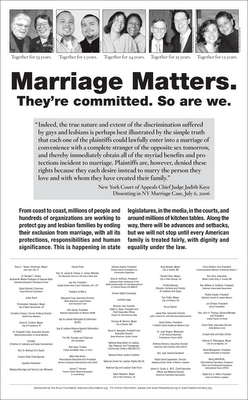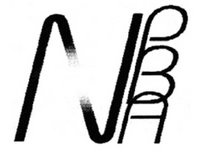 I often get email requests regarding my graphic design contract. First of all, I refer to mine as a "project agreement" - the term sounds a bit friendlier than "contract," but still shows that I mean business. I have found that my agreement has become a great "pre-qualifier" of clients. When sending out one of my promotional packets to potential clients I always include a copy of the document. Just including the agreement will show potential clients there is a seriousness to the possible business relationship.
I often get email requests regarding my graphic design contract. First of all, I refer to mine as a "project agreement" - the term sounds a bit friendlier than "contract," but still shows that I mean business. I have found that my agreement has become a great "pre-qualifier" of clients. When sending out one of my promotional packets to potential clients I always include a copy of the document. Just including the agreement will show potential clients there is a seriousness to the possible business relationship.
My project agreement is created in a way that I can adapt it to the the specific requirements of a particular project. The basic document is below. Until recently it was posted on a graphic design forum site. With an overhaul of the content, the project agreement is no longer available on that site. I'm posting it here as a resource for other designers to "use and abuse."
.........................................................................................................
Client contact name:
Business name:
Address:
City/State/Country/Postal Code:
Phone/Email/Fax:
PROJECT DESCRIPTION:
(Insert your itemized description of the project here)
ESTIMATED COSTS:
__ Labor fees (design, art direction, production, copywriting, client services, etc.) are estimated at a total of $_________ or ____ see attached estimate sheet for specifications.
__ Consultation fees are estimated at a total of $ __________ or ____ see attached estimate sheet for specifications.
__ Materials costs (RC/film/neg output, scanning, project specific materials, etc.) are estimated at a total of $__________ or ___ see attached estimate sheet for specifications.
Total estimated cost of project: $____________
Project estimates are valid for 90 days from the date of estimate. Project may be reestimated if, upon receipt of all project elements, the designer determines the scope of the project has been altered dramatically from the originally agreed upon concept. Printing fees will be estimated separately and payment arrangements made between client and printer.
PAYMENT SCHEDULE:
__ A deposit in an amount equal to 35% of the total estimated cost is requested prior to execution of the project ($__________).
__ Payment in full or the remaining balance is to be paid upon delivery of the completed project. A cash discount of 5% of the total project labor and consultation cost is offered to clients paying upon delivery of the finished project.
__ Payment in full or the remaining balance is to be paid 15 days from receipt of the final invoice for the completed project. Finance charge of 1.5% per month (18% annually) on all overdue balances.
__ Additional payment arrangements:
REPRODUCTION OF WORK:
__ The client assumes full reproduction rights upon payment for completed project.
__ One time reproduction rights for the specified project, at the agreed fee, are granted to the client. Any other usage must be negotiated.
__ All reproduction rights on the copyrighted work are retained by the designer. The work may not be reproduced in any form without consent from the designer.
__ The designer retains personal rights to use the completed project and any preliminary designs for the purpose of design competitions, future publications on design, educational purposes and the marketing of the designer's business. Where applicable the client will be given any necessary credit for usage of the project elements.
REJECTION/CANCELLATION OF PROJECT:
The client shall not unreasonably withhold acceptance of, or payment for, the project. If, prior to completion of the project, the client observes any nonconformance with the design plan, the designer must be promptly notified, allowing for necessary corrections. Rejection of the completed project or cancellation during its execution will result in forfeiture of deposit and the possible billing for all additional labor or expenses to date. All elements of the project must then be returned to the designer. Any usage by the client of those design elements will result in appropriate legal action. Client shall bear all costs, expenses, and reasonable attorney's fees in any action brought to recover payment under this contract or in which (Insert your company name) may become a party by reason of this contract.
COMPLETION/DELIVERY OF PROJECT
The estimated completion date the project is ______________. Any shipping or insurance costs will be assumed by the client. Any alteration or deviation from the above specifications involving extra costs will be executed only upon approval with the client. Any delay in the completion of the project due to actions or negligence of client, unusual transportation delays, unforeseen illness, or external forces beyond the control of the designer, shall entitle the designer to extend the completion/delivery date, upon notifying the client, by the time equivalent to the period of such delay.
ACCEPTANCE OF AGREEMENT:
The above prices, specifications and conditions are hereby accepted. The designer is authorized to execute the project as outlined in this agreement. Payment will be made as proposed above.
Client's signature:
Designer's signature:
Date:
..........................................................................................................
Remember, the above is simply a guide to follow. Your own design business may have other specific issues to include in a final contract document. My agreement is kept to one page for the sake of simplicity. I would also suggest having an attorney take a look at your completed agreement prior to putting it in use.
Some additional valuable resources for project agreement/contract information include the Creative Latitude "Resources", CreativeBusiness, CreativePublic and the AIGA Design Business and Ethics web page.
Books providing excellent business advice include Business and Legal Forms for Graphic Designers, by Tad Crawford and Eva Doman Bruck (with a CD of business form templates); Graphic Artists Guild Handbook: Pricing and Ethical Guidelines; Graphic Designer’s Guide to Pricing, Estimating & Budgeting, by Theo Stephan Williams; The Business of Graphic Design, by Ed Gold; and Cameron Foote's books The Business Side of Creativity and The Creative Business Guide to Running a Graphic Design Business. Of course, The Savvy Designer's Guide to Success is a very good resource as well.
© 2006 Jeff Fisher LogoMotives




















